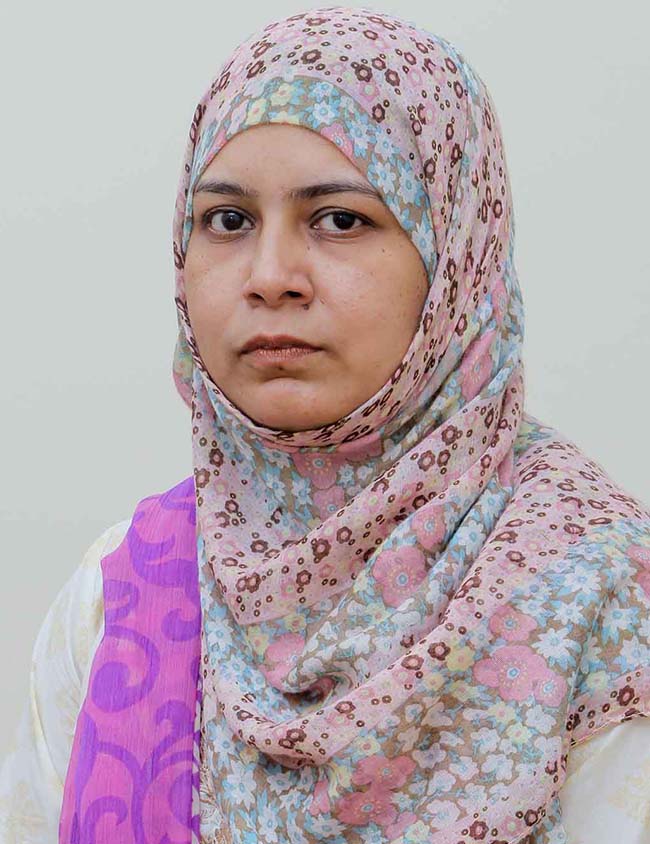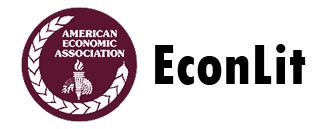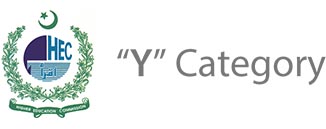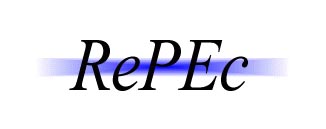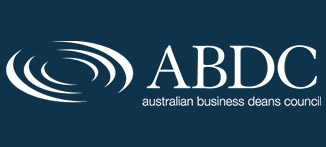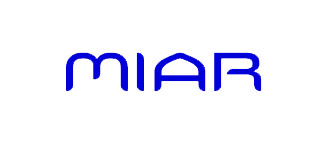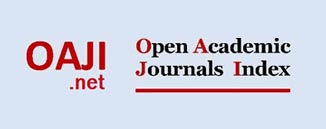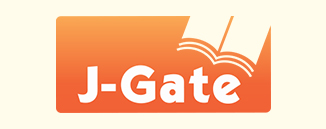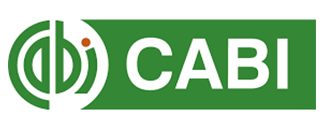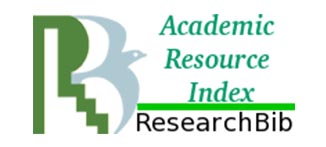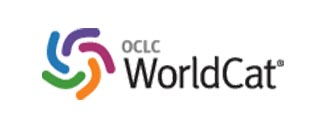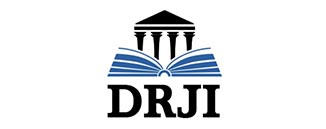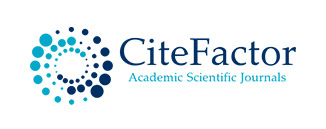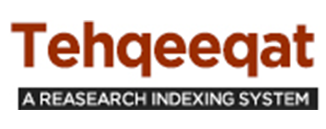Title:
Pakistan Journal of Applied Economics
ISSN:
ISSN 0254-9204 (Print)
ISSN 2519-0431 (Online)
Frequency:
Biannual (Summer and Winter)
Published by:
Applied Economics Research Centre (AERC)
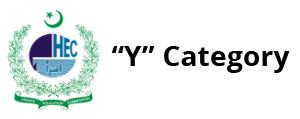 HEC recognized PJAE in “Y” Category
HEC recognized PJAE in “Y” Category
Theme of Pakistan Journal of Applied Economics
PJAE covers the applied research areas like agriculture, credit, finance, savings and investment, economic policies, education, health and nutrition, industry, manpower and employment, monetary and fiscal, population, rural and urban development, trade and aid, environment, transport and communication, water and power, etc. Papers with empirical work are preferred, which is helpful for policy making issues on the Third World Countries. The target group of readers is economists in academia, research institutions, government, etc., both local and international. A free online access and free publication make it easily available.
Editorial Objective
Pakistan Journal of Applied Economics since its inception in 1982, aims to provide its readers a unique forum for the exchange and sharing of information in the complex area of economics. The journal presents the social-economic problems, as expressed by economists, philosophers, political scientists, historians and business academics. The Journal publishes original contributions on applied issues in micro and macroeconomics. The primary criteria for selecting papers is quality and importance for the field. Papers based on a well motivated research problem that make a concrete contribution to empirical economics or applied theory are especially encouraged. It particularly fosters quantitative studies, the results of which are of use in the practical field, and thus helps to bring economic theory nearer to reality.
Editorial Criteria
Most welcome are articles written by professional scholars in economics. Some of the larger topics which fall within the purview of Applied Economics are as follows:
- Economics and Ethics
- Economics of Eductation/Health Care
- Socio-economic problems of developing countries
- Environmental Problem
- Globalization
Copyright
All copyright of the content of Pakistan Journal of Applied Economics (PJAE) are with the Applied Economics Research Centre (AERC), University of Karachi.
Coverage
The Pakistan Journal of Applied Economics covers complex economic areas such as:
- Environmental & Natural Resource Economics
- International Economics
- Labor Economics
- Finance
- Money and Banking
- Growth
- Public Finance
- Political Economy
- Law and Economics
Key Benefits
Pakistan Journal of Applied Economics offers wide-ranging studies of economic systems. The journal is an invaluable resource for keeping academics and practitioners aware of new trends, theories and developments
Open Access Policy
This journal allows readers to read, download, copy, distribute, print, search, or link to the full texts of its articles and to use them for any other lawful purpose.
Key Journal Audiences
The Pakistan Journal of Applied Economics covers complex economic areas such as:
- Students and academics in economics
- Policy Makers
- University and college libraries
Associate Editor
Tehseen IQBAL
Members Editorial Committee
Uzma IRAM
Aamir Hussain SIDDQUI
Fouzia SOHAIL
Sadaf MAJEED
Publications Secretariat
Pervez KIFAYAT
Urma ALI
Fahad ul HAQ
International Advisory Board
| Name | Institution Affiliation | |
|---|---|---|
| Rashid AMJAD | Lahore School of Economics, Lahore, Pakistan | |
| Tariq BANURI | University of Utah, USA | |
| Michael J. BRENNAN | University of California at Los Angeles, USA | |
| Shahid Javed BURKI | Burki Institute of Public Policy, Lahore, Pakistan | |
| M. Umer CHAPRA | Islamic Development Bank, Jeddah, Saudi Arabia | |
| Keith COWLING | University of Warwick, Coventry, UK | |
| Humayon DAR | Edbiz Corporation Ltd.,UK | |
| M. Aynul HASAN | ESCAP, United Nations, Bangkok, Thailand | |
| Daniel J. HENDERSON | University of Alabama, Tuscaloosa, USA | |
| Azhar HUSSAIN | Roskilde University, Roskilde, Denmark | |
| Emmanuel JIMENEZ | International Initiative for Impact Evaluation, New Delhi, India | |
| M. Ali KHAN | Johns Hopkins University, Baltimore, USA | |
| Mohsin S. KHAN | Rafik Hariri Center for the Middle East, USA | |
| Salman KHAN | Abu Dhabi Islamic Bank, Dubai, UAE | |
| Amir Jahan KHAN | Coventry University, Coventry, England | |
| Timur KURAN | Duke University, North Carolina, USA | |
| Michael LIPTON | University of Sussex, Sussex, UK | |
| Adeel MALIK | University of Oxford, Oxford, UK | |
| Muhammad Tariq MAJEED | School of Economics, Quaid-e-Azam University Islamabad | |
| Khalid NADVI | IDPM, University of Manchester, UK | |
| Nawab Haider NAQVI | HEC Distinguished National Professor, Islamabad, Pakistan | |
| Hafiz A. PASHA | Institute for Policy Reforms, Lahore, Pakistan | |
| Rathin ROY | National Institute of Public Finance & Policy, New Delhi, India | |
| Anwar SHAH | The Brookings Institutions, Washington, USA | |
| Rehman SOBHAN | Centre for Policy Dialogue, Dhaka, Bangladesh | |
| Aman ULLAH | University of California at Riverside, California, USA | |
| Shahid N. ZAHID | Formerly, Asian Development Bank, Manila, Philippines | |
| S. Akbar ZAIDI | Columbia University, New York, USA | |
| Asad ZAMAN | Pakistan Institute of Development Economics, Islamabad, Pakistan |
Editorial Board
| Name | Institution Affiliation |
|---|---|
| Eatzaz AHMAD | Forman Christian College, Lahore, Pakistan |
| Naheed Zia KHAN | Formerly, Fatima Jinnah Women University, Rawalpindi, Pakistan |
| Sajjad AKHT | Formerly, PITAD, Government of Pakistan |
| Muhammad Farooq ARBY | State Bank of Pakistan, Karachi, Pakistan |
| Nooreen MUJAHID | University of Karachi, Karachi, Pakistan |
| Zeeshan ATIQ | University of Karachi, Karachi, Pakistan |
| Muhammad OMER | State Bank of Pakistan, Karachi, Pakistan |
| Aly ERCELAN | Pakistan Fisher Folk Forum, Karachi, Pakistan |
| Shahnaz A. RAUF | Formerly, Air University, Islamabad, Pakistan |
| Naved HAMID | CREB, Lahore School of Economics, Pakistan |
| Riaz RIAZUDDIN | State Bank of Pakistan, Karachi, Pakistan |
| Nadeem-ul-HAQUE | Government of Pakistan, Islamabad, Pakistan |
| Wali ULLAH | Institute of Business Administration, Karachi, Pakistan |
| Akmal HUSSAIN | Information Technology University, Lahore, Pakistan |
| Ashfaque Hasan KHAN | School of Social Sciences & Humanities NUST, Islamabad, Pakistan |
Indexing
Instruction to Authors
- Papers must be in English.
- Papers for publication should be E-mailed at: [email protected] or [email protected], or mailed to:
- The Editor,
Pakistan Journal of Applied Economics
Applied Economics Research Centre
University of Karachi,
P.O. Box 8403
Karachi-75270, Pakistan - Submission of a paper will be held to imly that it contains original unpublished work and is not being submitted for publication elsewhere. The Editor does not accept responsibility for damages or loss of papers submitted.
- We encourage authors to refer to the Committee on Publication Ethics’ International Standards for Authors and view the Publication Ethics International Standards for Authors
- Also, read Guidelines published on good publication and the Code of Conduct by the Committee of Publication Ethics (COPE).
- The Editor,
- Manuscript should be typed in MS Word, double spaced, and hard copy with wide margins on one side of the page only. Common symbols in equations should be used; and unless necessary, the use of separate clips in manuscript should be avoided. All pages should be numbered consecutively. Titles and subtitles should be short. References, footnotes, tables and legends for figures should be typed on separate pages. The legends and titles on tables and figures must be in MS word (Times New Roman font), sufficiently descriptive such that they are understandable without reference to the text. Colours of axes, bars, boxes, etc., used in figures should be visible when printed in black colour. The dimensions of figures axes and the body of tables must be clearly labelled in English.
- The first page of the manuscript should contain the following information: (i) the title, (ii) the name(s) and institutional affiliation(s), (iii) an abstract of not more than 100 words. A footnote on the same sheet should give the name and present address of the author to whom reprints should be mailed.
- Acknowledgments and information on grants received can be given before the References or in a first footnote, which should not be included in the consecutive numbering of footnotes.
- Important formulae (displayed) should be numbered consecutively throughout the manuscript as (1), (2), etc., on the right-hand side of the page. Where the derivation of formulae has been abbreviated, it is of great help to referees if the full derivation can be presented on a separate sheet (not to be published).
- Footnotes should be kept to a minimum and be numbered consecutively throughout the text with superscripts arabic numerals.
- The references should include only the most relevant papers in the text, reference to publications should appear as follows: Khan (1978) reported that ….. or This problem has been a subject in literature before [e.g., Khan (1978) p.102]. The author should make sure that there is a strict one-to-one correspondence between the names (years) in the text and those on the list. At the end of the manuscript (after any appendices) the complete references should be listed as:
- For monographs
Ahmad, Jaleel, 1978, Import substitution, trade and development, Amsterdam: North-Holland, 3-40. - For contributions to collective work
Newbery, David M.G., 1975, The choice of rental contract in peasant agriculture, in: Reynolds, ed., Agriculture in development theory, New Haven: Yale University Press. - For periodicals
Baumol, W.J., 1982, Applied fairness theory and rational policy, American Economic Review, 72(4): 639-651.
Note that journal titles should not be abbreviated.
- For monographs
- Illustrations should be provided in triplicate (1 original drawn in black ink on white paper + 2 photocopies). Care should be taken that lettering and symbols are of comparable size. The drawings should not be inserted in the text and should be marked on the back with figure numbers, title of paper and name of author. All graphs and diagrams should be referred to as figures and should be numbered consecutively in the text in arabic numerals. Graph paper should be ruled in blue and any grid lines to be shown should be inked black. Illustrations of insufficient quality which have to be redrawn by the publisher will be charged to the author.
- All unessential tables should be eliminated from the manuscript. Tables should be numbered consecutively in the text in arabic numbers and typed on separate sheets. Any manuscript which does not conform to the above instructions may be returned for necessary revision before publication.
RESEARCH MISCONDUCT
The Pakistan Journal of Applied Economics regular the process to report, assess, inquire into, and investigate statements of research misconduct at the AERC. The Main policy applies to all faculties, reviewers, researchers, students and staff engaged in the proposing, performing, reviewing or reporting of research. The AERC adopt their own procedures with respect to discipline as a result of an investigation committee finding of misconduct.
A) Investigation Procedures
- Editorial Committee receives the report of an Investigation Committee in case find of research misconduct, the following procedures will apply
- If the Author is a faculty member, reviewer, researcher or students the report will be sent to the main, co-author of the paper, the Dean, and the Vice Chairman of the University and the author is blacklisted in PJAE.
PEER-REVIEW PROCESS
1. Editorial Independency and Confidentiality
- At first submitted manuscripts are checked for Plagiarism through the turnitin software, after which all articles submitted to a Pakistan Journal of Applied Economics (PJAE) journal are initially assessed by the Editor, who decides whether the article fits the scope of the journal and is suitable for peer-review or not. If submissions are considered suitable for process manuscripts are evaluated by ‘Internal Reviewers’ (desk review) on the basis of the academic merit and its relevance to the scope of the PJAE.
- The Editorial Committee decides about three reviewers for a particular manuscript based on their expertise and availability and which is requested to assess the article (importance, originality, study’s validity, clarity and sound methodology). The editorial committee ensures that the proposed reviewers should neither be affiliated with the same institution nor currently collaborates of the author or co-author. Based on the reviewer reports, the editor makes decision to ask for revisions, accept or reject the submission.
- The manuscripts and reviews are discussed at the Editorial Committee meetings. These discussions, along with the responses from reviewers, help the Committee members make a final decision on each manuscript. When difference of opinions between reviewers occurs, the Editorial Committee weighs all comments and arrives at a balanced decision based on these comments. Reviewers whose opinion differs from the final board decision should not be discouraged, for their hard work is nonetheless fully appreciated. The decision letter of the Editorial Committee and reviewers’ comments are sent to authors via email. The Editorial Committee is the final decision entity on publication.
- The editor of the PJAE ensures that all submitted manuscripts which are being considered for publication, undergo double-blind peer-reviewed by experts in the field of the concerned paper. Editor is also responsible for deciding as to which of the manuscripts submitted to the journal will be published (after going through the routine process through the Editorial Committee), and based on validation of the work in question, its importance to researchers and readers, the reviewers’ comments, and such requirements as are currently in force regarding libel, copyright infringement and plagiarism.
- The Editorial Committee and the Editor makes absolutely sure that the identity of the author is not disclosed to the internal reviewer or external reviewers and vice versa i.e., identity of internal / external reviewers remain hidden from the author of manuscript at all cost. Editor, Editorial Committee members and the Publication staff do not disclose any information about a submitted manuscript to anyone.
Policy for Reviewers and Authors
A) Policy for Reviewers
- Promptness
Any invited referee who feels unqualified to review the research reported in a manuscript or know that its prompt review will be impossible, should immediately notify the editor and decline the invitation to review so that alternative reviewers can be contacted. - Confidentiality
Manuscripts received for publication should be confidential and must be treated such that they must not be knows or discussed with others, persons except the Editor (Ed. Committee, Ed. staff). This also applies to the invited reviewers and referees who decline the review the invitation. - Standards of Objectivity
Reviews should be conducted objectively and opinions of reviewers should be formulated clearly with supporting arguments so that authors can use them for improving the manuscript. - Acknowledgement of Sources
Reviewers and/or International (External) Referees should identify relevant published work that has not been cited by the authors. Any statement that is an observation, derivation or argument that has been reported in previous publications should be accompanied by the relevant citation in the text with year of publication. These references shall approve with author (s), year, title of the study/book and name of the journal book/report, exc., with volume issue No. and para. A reviewer and/or international referee should also notify any substantial similarity or overlap between the manuscript under consideration and any other manuscript (published or unpublished) of which they have personal knowledge.
B) Disclosure and Conflicts of Interest
- Any invited referee(s) who have conflicts of interest resulting whatever with any of the author(s), institutions connected to the manuscript and the work described therein should immediately notify (in writing) to the editor to decline the invitation to review so that alternative reviewers can be contacted.
- Unpublished material disclosed in a submitted manuscript must not be used in a reviewer’s own research (whether a reviewer of a paper or regretting to review the paper) without acknowledgement or written consent of the author(s) of that work. Privileged information or ideas obtained through peer review must be kept confidential and not to be used for the reviewer’s personal advantage.
C) Policy for Author’s
- Authorship
The authors’ names should be accurately reflected as to who carried out the research and who wrote the article, and the order of authorship should be jointly determined by all co-authors.
- Originality, Plagiarism and Acknowledgement of Sources
Authors must ensure that their contribution does not contain any libel matter or infringe any copyright or other intellectual property rights or any other rights of any third party. Publications that have been influential in determining the nature of work reported in the manuscript should also be cited. Plagiarism is of many kinds, from ‘passing off’ another’s paper as the author’s own, copying or paraphrasing substantial parts of another’s work (without attribution), and claiming results of research conducted by others. Plagiarism in all its forms will be treated unethical behaviour and would be unacceptable.
The authors should ensure that they have written entirely the original work, and if they have used the work and/or words of others; it should be appropriately cited or quoted. Authors should obtain permission to reproduce any content from the third-party/source (text and images). Third-party content for which permission has not been obtained (excluding contents by permission) should not be contained in the paper.
D) Publication and Submission Fee
The non-refundable processing fee will be charged for manuscripts submitted within Pakistan or outside Pakistan. The fee can be submitted via a pay order, bank draft, or online deposition to the bank.
- The processing fee will be submitted in two steps:
a) At the time of submission, the author(s) will deposit Rs.5000/- or US$ 50/- (outside Pakistan).
b) When the paper is reviewed, the author (s) will be intimated to submit the remaining Rs.20,000/- or US$ 100/- (outside Pakistan) for publication.
c) Submission of processing fees does not guarantee acceptance of a manuscript.
- For online payment please use the following details below:
Account Title: Institute of National Capability in Applied Economics
BANK: National Bank of Pakistan
Account: 4100065605
IBAN: PK84NBPA0071004100065605
For overseas manuscripts (outside Pakistan), a non-refundable processing fee of US$ 150/- will be charged. Overseas authors can send the fees through bank transfer. The exact details of the account and transfer will be emailed once a complete manuscript is submitted for processing.
E) Funding
The PJAE is being regularly publish with the financial support of the Higher Education Commission Government of Pakistan.
F) Declaration
Authors should declare that the study/paper submitted to PJAE is original. Authors should ensure that their manuscript has neither been submitted nor published elsewhere (single/jointly). Sections of the manuscript which overlap with others/authors published or submitted content should be acknowledged and cited.
POLICY OF COMPLAINTS
If the PJAE receives complaint that any contribution to the Journal regarding Authorship, Plagiarism, duplicate, concurrent publication/Simultaneous submission, research results misappropriation, allegations of research errors and fraud or otherwise unlawful materials, PJAE will investigate the complaint.
Investigation may include a request that the parties involved substantiate their claims. The Journal will make a good faith determination whether to remove the allegedly wrongful material. A decision not to remove the material should represent the Journal’s belief that the complaintis without sufficient foundation, or if well‐founded, that a legal defense or exemption may apply, such as fair use in the case of copyright infringement or truthfulness of a statement in the case of libel.
Involvement and Cooperation in Investigations
Editor and the Editorial Committee will take responsibility to measures when ethical concerns are raised with regard to a submitted manuscript or published paper. Every reported act of unethical publishing behaviour will be looked into, even if it is discovered at author stage.
If you have a complaint with our editorial or your subscription, please feel free to contact us at email [email protected].




